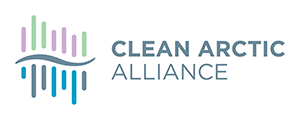 Photo: Ice lead, Dijmhna Sund, Nioghalvfjerdsfjorden, Greenland, via davewalshphoto.com
Photo: Ice lead, Dijmhna Sund, Nioghalvfjerdsfjorden, Greenland, via davewalshphoto.com
Just over a year ago, UN Secretary General António Guterres made this startling statement:
“We are on a fast track to climate disaster. Major cities underwater, unprecedented heatwaves, terrifying storms, widespread water shortages. The extinction of a million species of plants and animals. This is not fiction or exaggeration. It is what science tells us from our current energy policies.”
The Secretary General’s words may come as a shock, or seem like a prelude to an action or science fiction film. Yet, as I write, parts of the Atlantic Ocean are undergoing an unprecedented marine heatwave. Is is only June, yet wildfires and heatwaves are once again erupting across the Northern Hemisphere. The impacts of climate warming are happening now, today and have been for a number of years – and nowhere are these impacts and consequences being felt more strongly than in the Arctic.
Arctic re-Cap
The Arctic is an important ice habitat for wildlife – a unique ecosystem supporting a huge productivity of plant and animal life in the oceans. It is both a highway and source of food for Indigenous people and provides cultural identity for the Inuit and other Indigenous communities.
The Arctic is also a major regulator of the global climate – so it is of grave concern that climate scientists consider the Arctic to be warming as much as four times faster than the planet as a whole. The region is also experiencing unprecedented seasonal ice loss, permafrost thaw and increasing ocean temperatures. The UN International Panel on Climate Change has acknowledged that increased weather and climate extreme events are exposing Arctic communities to acute food insecurity.
Declines in sea ice extent and volume are feeding a burgeoning social and environmental crisis in the Arctic, while cascading changes are impacting global climate and ocean circulation. Scientists have high confidence that processes are nearing points beyond which rapid and irreversible changes on the scale of multiple human generations are possible. Scientists say it is now too late to save summer Arctic sea ice, and research has shown that “preparations need to be made for the increased extreme weather across the northern hemisphere that is likely to occur as a result.”
The Threat from Shipping
There has long been an interest in sailing ships through the Arctic. Some of the early European Arctic explorers had as their primary objective to find a route through the ice between the Atlantic and Pacific Oceans. Today receding sea ice is leading to renewed interest in Arctic shipping.
The Arctic Council reports a 25% increase in shipping in the Arctic between 2013 to 2019, and a 75% increase in the total distance sailed by all vessels during this same time period. Increases in the numbers of fishing vessels and bulk carriers are particularly evident.
Increasing Arctic shipping brings increasing risks and threats – with emissions of black carbon and of greenhouse gases from vessels contributing to the climate crisis. Yet, this threat can be greatly reduced. The shipping sector has the power to quickly reduce emissions of black carbon.
Black Carbon
Black carbon is a short-lived climate pollutant, produced by the incomplete burning of fossil fuels, with an impact more than three thousand times that of CO2 over a 20 year period. It makes up around one-fifth of international shipping’s CO2e (equivalent) emissions and when released near to the Arctic has a disproportionately high impact.
Not only does it contribute to warming while in the atmosphere, black carbon accelerates melting if deposited onto snow and ice – hence its disproportionate impact in the Arctic. The melting snow and ice exposes darker areas of land and water and these dark patches then absorb further heat from the sun and the reflective capacity of the planet’s polar ice caps is severely reduced. More heat in the polar systems – results in increased melting. This is the loss of the albedo effect.
Black carbon also has a negative impact on human health, and recent research has found black carbon particles in the body tissues of foetuses, following inhalation by pregnant mothers.
We have known for around three decades that reducing black carbon emissions is necessary, due its climate and health impacts. On land, considerable effort has been made to ban dirtier fuels in power stations, and to install diesel particulate filters on land-based transport, – all to reduce emissions of black carbon and improve air quality.
However, the same efforts have not yet been made at sea. Measures to reduce black carbon emissions from shipping have been under consideration by the International Maritime Organization for well over a decade – at this point, we find it hard to believe that there’s much left to consider. In the interim, the shipping sector has lost the opportunity to gain some “breathing space” as envisaged in 2010 when three countries – Norway, Sweden and the United States – submitted a proposal for action to reduce emissions of black carbon from ships that had an impact on the Arctic.
How to Reduce Black Carbon Emissions
Reducing black carbon emissions from shipping is a straightforward task – does not require the development of new fuels or new technology, and can be achieved with immediate effect. Individual marine engines would see somewhere between a 42 – 79% reduction in black carbon emissions by moving from heavy fuels to diesel fuels (depending on the type of engine, condition, load of the ship and other factors). Moving all the ships operating in the Arctic and currently using heavy fuels will result in a 44% reduction in black carbon emissions. Installing a diesel particulate filter – an existing technology that can only be used with cleaner fuels, would reduce black carbon emissions by over 90%.
The shipping sector must play its part in keeping the Earth below the 1.5 degrees Celsius Paris Agreement limit – it must start reducing emissions now – including black carbon emissions. Shipping companies need to make better choices and ignite a scale-up of the same technology that has been used on land-based transport for a considerable number of years.
This really is low-hanging fruit. Action on black carbon can be taken tomorrow by making better fuel choices and by installing particulate filter technology on ships.
So, what needs to happen?
To ensure that no-one is at a competitive disadvantage, it is essential that the IMO put in place a regulation to require ships operating in and near to the Arctic to move to fuels which result in lower black carbon emissions. Two years ago, the IMO adopted a resolution – MEPC 342 (77) – but it is voluntary. This has prompted the Clean Arctic Alliance to call for an amendment to MARPOL Annex VI, chapter 3 to introduce a specific requirement for ships operating – north of 60 degrees North – in and near the Arctic to use lighter distillate fuels (en route to decarbonisation) or cleaner non-fossil fuels.
In addition, emissions of black carbon from ships operating further south also reach the Arctic, so the designation of Emission Control Areas (ECAs – bodies of water where stricter controls are in place to prevent, reduce and control air pollution from shipping) both in the Arctic and further south in European waters would also be valuable for reducing climate forcing black carbon emissions and health impacts. This is provided ships sailing in ECAs do not choose to comply with the regulations by using ultra-low sulphur fuels or heavy fuels with scrubbers, but rather switch to distillate or other non-fossil fuels with lower black carbon emissions.
Crucially, reduction of black carbon emissions must be integrated into all IMO climate initiatives with measures that target not just CO2, but CO2 equivalents, including black carbon. A global regulation requiring ship fuels to be of a standard that will result in lower black carbon emissions should be developed, in parallel to the drive to decarbonise shipping entirely, through the development of energy-saving practices and technologies, wind propulsion, batteries, low and zero-emissions fuels, and other zero emission technologies that deliver air quality and climate benefits.
At the International Maritime Organization’s Marine Environment Protection Committee in July (MEPC 80), Member States must:
- adopt highly ambitious interim targets addressing all climate forcers which will lead to a 50% reduction in shipping’s climate impact by 2030;
- commit to preparing concrete proposals for approval in 2024 which deliver mandatory black carbon emissions reductions by all ships which impact the global Arctic; and
- support the designation of new ECAs to reduce air pollution in the Arctic while agreeing not to install scrubbers to comply with new emission thresholds.
Finally, reducing ships’ black carbon emissions cannot be achieved in isolation. It is essential that all players all cooperate and collaborate. Climate vulnerable nations and Indigenous communities must be fully involved in the decision-making processes, and collaboration is essential at all levels.
The planet is already considered to have heated by around 1.1oC, global goals are to keep warming below 2oC or preferably below 1.5oC, but current efforts to reduce greenhouse emissions will not achieve this. Surely easy wins or “low-hanging fruit” must be plucked first: slashing black carbon emissions from ships is a readily achievable option.
Dr Sian Prior is the Lead Advisor to the Clean Arctic Alliance, an international coalition of 20 non-profit groups – some of whom have consultative status at the International Maritime Organization as well as the Arctic and Nordic Councils.

